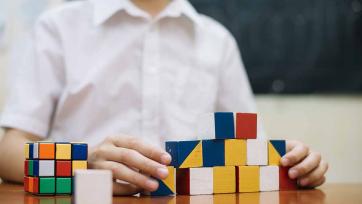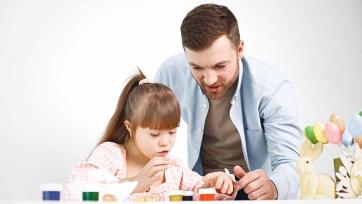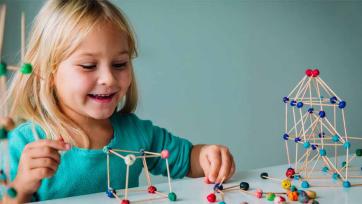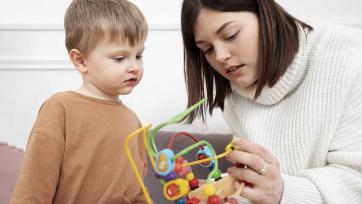Studies show that kids who spend time making art completely develop their brains. It allows kids to express themselves and helps them better coordinate their hands and eyes. It teaches them important things like the color wheel, proportion, perspective, balance, and more.
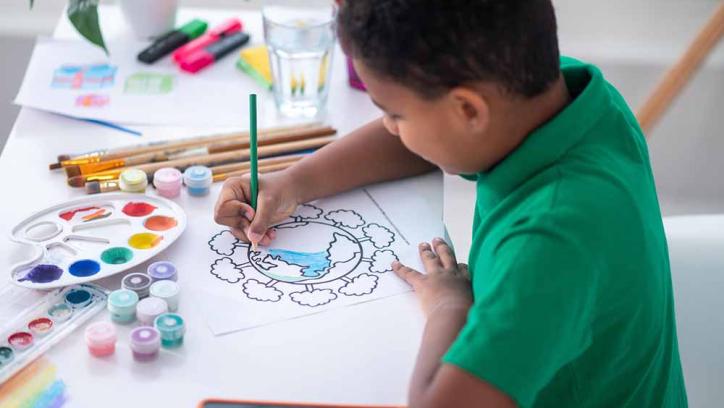
Child psychologists have said for years that drawing and art help build your child's EQ, or emotional quotient, in addition to building important physical traits. This can be a big part of keeping your child's mental health stable and strong. Art is a natural way for adults to deal with depression and anxiety, and children who are good at art are less likely to get these illnesses.
Some child psychiatrists have also found that art, especially drawing, can help your child's brain grow faster. People know that art can help kids with autism and other diseases. It teaches kids how to deal with problems so they can handle their day-to-day lives.
Drawing is also known to help kids who have trouble learning, like those with dyslexia or dysgraphia, deal with or overcome their problems. It's important to know that art isn't a cure for these illnesses. It is a useful tool that helps with the overall service and gives these kids regular support.
Parents should not be upset with how quickly their kids improve at art. Every child grows and changes at his or her own pace. Your child should find it fun to learn how to draw, and he shouldn't feel like he has to pick up the skill or habit. Make sure you don't force your kid to draw if he doesn't want to.
How to Teach Kids to Draw, Based on Their Age
When instructing your child how to draw, among the most important things to remember is to give them space and tools to discover art and drawing. Young children have a propensity for being inquisitive and attempting to communicate themselves in ways that are readily misinterpreted as inability or lack of talent. The challenge is to keep them interested long enough for the activity to have a good effect. Taking into account how old your child is would help.
From 2 to 5 years old
It might seem hard to teach kids in preschool how to draw, but the goal is to let the child explore whatever he desires through art and drawing.
● Add art and drawing to your playtime. Make it something that your child will remember as fun.
● Set yourself up for success by eliminating anything that could upset you. Have a dirty outfit ready for your child, and put newspapers on the floor.
● At this age, your child will be interested in everything new. Don't just give your child tools to draw with. Let him use chalk, sand, and paint instead to show his thoughts and learn about things.
● It would help if you didn't show your kid how to draw. Instead, let him decide everything. Don't stop him if he wants to draw himself with pink hair. Instead, tell him how hard he worked and ask what he drew.
● Ask your students questions about what he drew based on what you saw. This will help your child tell a better story, and he or she might even change or add to the picture.
● Art can be a wonderful way for your child to deal with feelings that are hard to talk about or understand. If your child is mad, ask him to draw something angry.
● Put his drawings on display to encourage him to keep drawing. Remember that the goal isn't to make a finished piece but to help people feel good about art.
From 5 to 9 Years Old
At this age, your child is old enough to start drawing what he or she sees. Up until now, he would draw based on what he thought and what he had learned. Using the tips below, you can help him improve his ability to notice things.
● Give your kids something different to draw. Choose things they can attach to and that have simple shapes. The best thing would be his favorite sippy cup or toy.
● Ask your child to look at different things and tell you what shapes he sees. Sit down while he draws and discuss the shapes before he begins.
● Tell your child that when they are drawing, they shouldn't look at the paper too much. Help him understand that learning the right techniques is more important than getting the job done.
● As you did before, ask him questions about his drawings that will make him think more about the subject or notice things he hasn't noticed before.
● At this age, try to get people to use one medium at a time. This will help your child figure out what he likes and what the medium can do for him.
● Keep his drawings in a special book so he can care for himself. Even better, you can get him to start a project that is a picture book that tells a whole story.
● Don't use his papers to show how to do something. He should think about his options on his own.
● Don't force him to draw from what he sees. You can have him make one of these drawings every week instead. All that matters is that he understands how this style of illustration works.
From 9 to 11 years old
At this age, your child will be able to understand more complicated ideas. This includes things like space, perspective, and more difficult mediums.
● Instead of just talking about the thing, talk to your child about where the thing is. Are there other things that cover it? Where does it go? Where does the thing go?
● This is a great time to learn about drawing and proportions. He can draw several things next to each other that are all different sizes. He can also start drawing and learning about the human body by drawing himself in a mirror or having someone pose for him.
● Your child might feel bad about how his drawing turned out. Remind him that drawing requires regular practice and that he should focus on the process, not the result.
● Make sure to show him a lot of different kinds of art and ways to draw. Take him to museums and art shows and get him talking about what he sees. Getting smarter and more critical will assist him in many ways.
● You can give your child a new drawing task every week. This should be interesting and fun enough to keep him interested. You might take him to a park and tell him he has time to draw anything he sees there. Alternatively, he could draw something he sees at school. Make sure the challenges are fun and on point.

